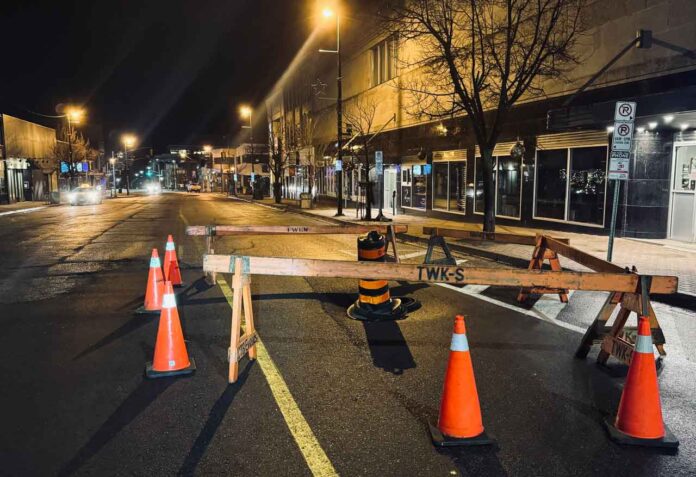THUNDER BAY – NEWS – The eastbound lane on Red River Road is closed just east of Court Street. A small sinkhole has formed causing about a one foot deep drop in the newly completed pavement.
The recent occurrence of a sinkhole on Red River Road, near the intersection of Court Street, has raised concerns and curiosities about the formation of sinkholes, particularly in areas of recent road construction. This incident, which resulted in the closure of the eastbound lane on Red River Road, provides a prime example of how sinkholes can develop under newly paved roadways.
It is likely that in this case the recent heavy rain has eroded the gravel and other material around the sewer causing the road to collapse around the sides of the sewer cover.
The Phenomenon of Sinkholes: A Focus on Road Construction
1. Defining a Sinkhole:
A sinkhole is a ground depression or hole caused by the collapse of the surface layer, varying in size and often occurring suddenly.
2. Sinkholes and Road Construction: A Specific Scenario
While sinkholes are commonly associated with natural geological processes, they can also occur as a result of road construction activities. In these cases, the activities involved in constructing a road can disrupt the existing balance of the subsurface, leading to sinkhole formation.
3. The Process of Formation Under New Roadways:
- Soil Displacement and Compression: During road construction, heavy machinery and the addition of new materials can compress and displace the soil beneath. This displacement can create voids or unstable pockets.
- Altering Water Drainage Patterns: Construction often changes the natural drainage of water in an area. If water accumulates in certain spots, it can lead to erosion or softening of underground layers, especially in areas with soluble rocks like limestone.
- Vibration and Weight: The vibration from heavy machinery, coupled with the weight of new road materials, can cause previously stable underground cavities to collapse, forming a sinkhole.
- Disruption of Underground Features: In some cases, construction activities may inadvertently damage or disrupt underground features like old mine shafts, natural caverns, or utility tunnels, which can lead to sinkholes.
4. Specifics of the Red River Road Incident:
In the Red River Road scenario, the sinkhole’s formation could be linked to the construction activities in the area. The process of laying down the new roadway might have disturbed the subsurface stability, leading to the eventual collapse and the creation of the sinkhole.
5. Prevention and Management in Construction Zones:
To prevent such occurrences, particularly in construction zones, several measures are essential:
- Subsurface Assessment: Conducting thorough geological surveys before construction to identify potential weak zones.
- Monitoring and Inspection: Regularly monitoring the construction area for signs of subsurface movement or instability.
- Water Management: Ensuring proper drainage systems are in place to avoid water accumulation in susceptible areas.
- Construction Techniques: Utilizing construction techniques that minimize subsurface disruption and evenly distribute weight.
The sinkhole on Red River Road illustrates the complex interplay between human activities, such as road construction, and geological processes. Understanding these dynamics is crucial in preventing and managing sinkholes, especially in urban and construction areas. As the repair work progresses on Red River Road, incorporating these insights and preventive measures will be key to ensuring the long-term stability and safety of the roadway.





